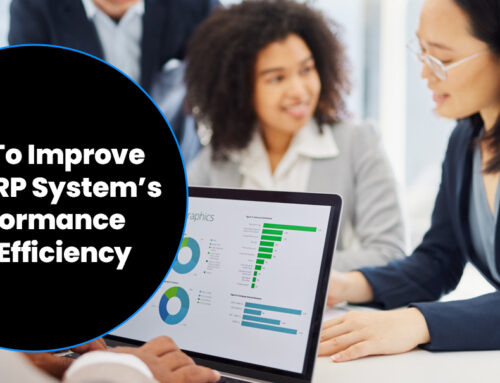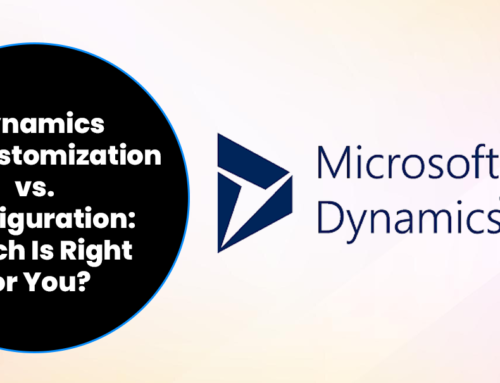
The ERP implementation stage lasts months to a year. Here’s a breakdown of the remaining 14 critical phases of ERP implementation.
Did you know that 78% of companies hire ERP consultants and professionals to assist in their ERP projects? Nearly 90% of those use cases involve ERP implementation.
ERP implementation is a time and resource-consuming, multi-step process that entirely depends on an organization and its teams’ readiness to embrace the platform to overcome operational and administrative barriers. Cox-Little & Company’s certified and industry-focused ERP implementation specialists provided a detailed breakdown of the ERP system implementation steps.
In part one, we covered the first 14 steps. Let’s explore the remaining steps, spanning the width of the implementation process to increase synergies between departments and enhance data centralization and productivity in companies using ERP software.
Step 15: Vendor Selection Presentation: Build a presentation addressing essential questions, covering areas that we touched upon in part one of this blog series, such as:
- Does the ERP software address the organization’s specific functional requirements?
- Does the ERP software integrate with the current systems and data?
- Can the software provide the necessary reporting and analytics capabilities, such as financial reporting, inventory management, and sales analysis?
- Is the ERP software scalable and flexible enough to accommodate future business growth?
- Is the ERP vendor reputed, and do they provide adequate support and maintenance?
- What is the total cost of ownership, including implementation, customization, and ongoing maintenance and support?
- What is the ERP implementation timeframe?
- Are there internal staffing requirements?
- i. Data management and reporting, including data accuracy, security, and compliance
- Will there be additional expenses or resources for IT infrastructure, including hardware, network, and cloud system compatibility?
- Demonstrate user experience (UX) based on critical parameters like ease of use, user adoption, and accessibility.
- Does the ERP vendor offer flexibility to accommodate dynamic business needs?
Step 16: Vendor Selection Presentation to Executives:
A sign-off from the decision-makers is needed to get the ball rolling. Leaders, executives, and decision-makers call the shots based on the requirements that ERP implementation needs to address.
Step 17: Vendor Selection: Choose an ERP vendor who can meet all the criteria and exceed expectations with reliable, ongoing support and maintenance. The selection criteria will target certain vendors, ERP features, modules, and industry expertise guaranteed to address specific business complications and long-term business objectives.
Step 18: Vendor Meets to Share Organizational Design: Assess whether the current technology architecture, IT infrastructure, and organizational flow of processes and people will be compatible with the new ERP system. The ERP vendor can answer questions and evaluate systems and organizational design, which helps calculate the ROI on ERP investments.
Step 19: Building Complete ERP Project Plan: Start with a clear plan on the ERP project schedule, budget, milestones, location rollouts, Go-Live dates, user testing, user training, etc.
Step 20: ERP Software Configuration: Involves making changes to settings and built-in ERP software features for personalizing and optimizing the system according to the organization’s exclusive business procedures, workflows, and prerequisites. It involves these critical steps:
- Setting up the Organizational Structure
- ERP Customization.
- Defining User Access Control.
- System Integration.
Step 21: Data Migration Planning: Identify and plan data migration strategies to move relevant data from databases and systems across the organization into ERP systems’ databases. The data migration planning process involves the following steps:
- Complete Data Audit across Systems and Applications.
- Classifying Data for Migration.
- Data Transfer Method.
- Testing Data Migration.
- Data Recovery and Backup.
- Establishing Data Governance
Step 22: Testing ERP System: Before the Go-Live, ERP professionals and testing teams evaluate the new ERP software across their workflows, functions, and architecture to ensure it serves business requirements and is free from the risk of implementation failure. The ERP testing phase involves:
- Identifying and documenting user acceptance criteria.
- Performing end-to-end system tests for functionality.
- Validating all migrated data for accuracy.
- Conducting user accessibility reviews.
- Testing automation processes and workflows.
- Testing system security.
- Confirming compatibility with other systems and applications.
Step 23: Training Employees and Users on New ERP System: Training employees and internal teams to use the new ERP system, its controls, and features are critical for optimizing the value from ERP investments. Employees and users must be thorough with ERP usage as it helps organizational change management adopt the latest innovation strategies and technologies. This step is further broken down into:
- Building an overview of how the ERP system works and its impact on business processes.
- Clear step-by-step instructions on features and functions of the ERP system.
- Detailed explanations regarding data entry, reporting, and other basic tasks.
- Guidance on troubleshooting issues.
- Resources for ongoing support.
Step 24: Complete Roll Out or ERP Application Implementation: Imagine a broader strategy to successfully implement ERP systems throughout the ecosystem for hands-on usage and solving real-world use cases. ERP users reach this stage only after demystifying possible biases and oversights on ERP systems to ensure they are adaptable to current and future complexities and business needs. It requires engaging with experts to revisit and reframe the below processes:
- Monitoring for data accuracy and integrity.
- Creating real-time user access.
- Building security protocols.
- Workflow process planning.
- Sanctioning of user permissions
Step 25: Go-Live: Go-live is the time when the ERP systems are ready to use and the codes move from the testing to the production phase. The duration of the go-live phase strictly depends on the enterprise’s size, ERP project planning, implementation complexity, leadership, change management practices, and more.
Step 26: Post-Go-Live Production Support: After the ERP system is up and running, post-go-live activities and production support ensure the enterprise thoroughly leverages its capabilities and features. Post-go-live sessions also help assess and benchmark how the ERP system users and organizational systems acclimate to the new ERP environment.
Step 27: Ongoing Maintenance & Support: ERP maintenance and support is ongoing. It involves:
- Perform regular maintenance checks, upgrade software as needed, and troubleshoot.
- Creating standard operating procedures (SOP) for using the system and troubleshooting common issues.
Step 28: Retiring Legacy Systems: Move over legacy or older ERP versions that lack integrations and are susceptible to security threats. The cost of maintaining an outdated enterprise application exceeds spending on newer technology platforms, requiring lower ownership costs and hardware or software investments. Moreover, many enterprises grapple with challenges like scalability and lack of vendor support for legacy ERP systems that are slated to phase out.
Here are some FAQs to simplify your understanding of different phases of ERP implementation
- Is there a standard template for ERP implementation?
Organizations can manage their ERP implementation journey by tracking key milestones and monitoring them according to best practices. Since the agenda for ERP implementation varies between organizations and their industry, there is no standard implementation template. However, every enterprise and its team must document specific goals achieved during different phases of ERP implementation, which will be used for reference and benchmarking success.
2. What are the common ERP implementation risks?
Common ERP implementation failures and risks include a slew of factors, such as a lack of leadership vision and involvement in ERP project planning, lack of collaboration across teams and departments, unrealistic goals, budgets, and timelines, insufficient training, and absence of change management.
3. Who are the stakeholders involved in the ERP implementation planning?
An ERP implementation plan requires collaboration and deep involvement from leaders and decision-makers like CIOs, IT managers, project managers, finance professionals, top-level executives, and in-house implementation teams. It also involves end-users and employees using the ERP software post-implementation. An enterprise can hire implementation partners, external ERP professionals, and consultants to assist its internal teams.
Are you looking to hire the right experts for your ERP projects?
Connect with our team to discuss your provisional and permanent ERP staffing needs!





